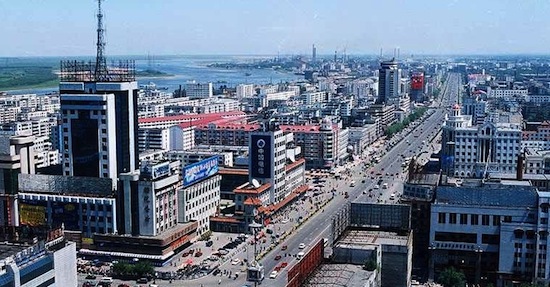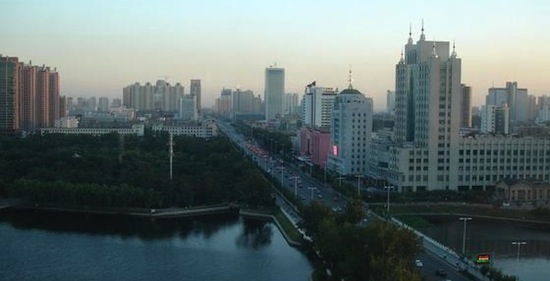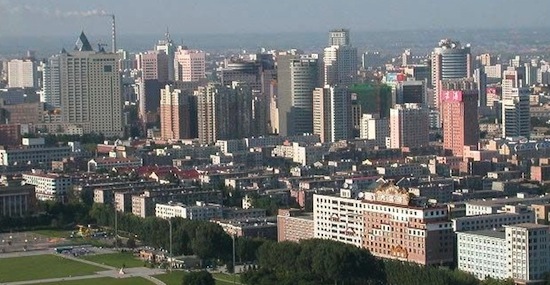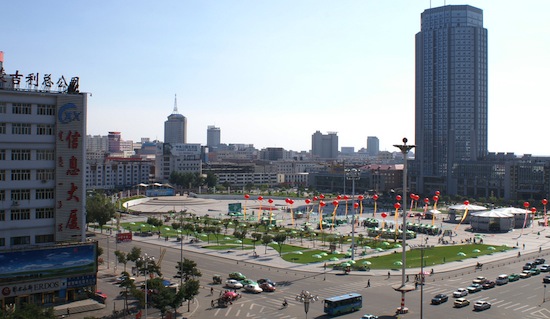China’s Fastest Growing Cities: The Demographics
Growth in Inland Cities as Coastal Regions Slow Down
Op-Ed Commentary: Chris Devonshire-Ellis
Nov. 5 – At the Economist China Summit earlier this week, the publication, in a special session, identified the fastest growing cities in China. Taking into account rises in per capita GDP and disposable income, the top five came out as being Hefei, Baotou, Shenyang, Changchun and Hohhot.
During the same session, the CEOs of Bayer and Adidas for China emphasized the development of China’s inner regions as being key areas for growth, and stressed that the coastal areas would slow down, and become more competitive. Continuing high growth in China then, seems to require more attention to detail to the developing cities in China’s inland regions as wages increase and disposable income follows suit. Interestingly, that was borne out by the Economist’s own research into the top five fastest growing cities.
Here then, are the demographics of each:
Hefei, Anhui Province

Despite being the capital of Anhui Province, Hefei is a relatively underdeveloped city. However, with the rising rental costs in Shanghai and other cities in the Yangtze River Delta, more companies are looking towards second tier cities like Hefei as an alternative location for business.
Fast facts
- Hefei’s GDP has grown at a double-digit rate for more than 20 years
- Coca-Cola produces 180,000 bottle a day in the Hefei Economic and Technological Development Area
- Hefei is located 130 kilometers west of Nanjing, 404 kilometers north of Hangzhou and 439 kilometers east of Wuhan, placing it in a key position to act as a “gate” to Central China.
- The city supplies Shanghai with much of its farmed fresh water fish and crustaceans
Infrastructure
Hefei is connected to the rest of China by four superhighways which link the city to Yining, Nanjing, Yantai, Shantou, and Chengdu. The city buses cover over 90 routes. The city lies at the junction of three national railway lines and the largest passenger terminal in Anhui Province. As a railway hub, it has lines going in five directions, connecting to all major cities in China. The line between Hefei and Nanjing to be put in operation in early 2008 will have a maximum passenger speed of 200 kilometers an hour and will travel at 120 kilometers an hour when carrying goods.
Hefei Luogang Airport, located 12 kilometers south of the city, is a modern airport. It has over 30 direct flights to various domestic destinations, including Beijing and Shanghai, as well as periodic direct flights to Hong Kong. It handles 1.5 million passengers annually and is capable of receiving Boeing 747s.
Economy and investment climate
In 2008, Hefei had a GDP of RMB164.84 billion with per capita GDP for all residents at RMB34,482. Hefei’s fiscal revenue increased 40 percent to RMB30.12 billion in 2008.Investment came from 12 Fortune Top 500 companies, including Hitachi, McDonald’s and Carrefour. Hefei has 34 major industries, turning out more than 2,000 products, 250 of which are exported to other parts of the world.
Although not as popular a destination for FDI as some of the other cities in the region, Hefei is expanding fast. Contracted FDI increased by 24.6 percent to US$1.15 billion in 2007, dropping by just over 30 percent to US$780 million in 2008 due in most part to the global financial crisis. Used FDI meanwhile went up by an impressive 40.2 percent in 2007 and again dropped only about 30 percent in 2008 to US$770 million.
The eight key industries are: auto-making, equipment manufacturing, household appliance, chemical industry and tire, IT and software, new materials, biotechnology and new medicine, and finally food and processing of agricultural and sideline products. There was fast growth in industrial production in 2008. The SOEs and the non-SOEs had an annual sales volume exceeding RMB5 million realized and an added value of RMB60.63 billion, increased by 26 percent. Of the above-scale industrial enterprises, those from heavy industry realized RMB38.01 billion, an increase of 25 percent, while those from light industry realized RMB22.53 billion, an increase of 29 percent.
The city is considered one of the four main “science and education bases”in China with over 200,000 scientific and technological personnel, more than 190 research institutes and 358 different kinds of research and development institutes. It is second only to Beijing in terms of key national scientific projects and national level laboratories. In 2008, exports increased to US$5.43 billion while imports came in at US$2.28 billion.
Baotou, Inner Mongolia

Baotou is Inner Mongolia’s largest city and economic center. It can be found in the middle of Inner Mongolia, on the north bank of the Yellow River and west of the capital, Hohhot. The area developed at a much later date compared to Hohhot, only becoming a town in 1809. It became a city in 1923 when a rail link to Beijing was built; establishing Baotou as a major trade hub between Mongolia and the rest of the country.
Fast facts
- Is 140 kilometers from Hohhot, the capital of Inner Mongolia
- Has a population of 2.5 million
- Baotou’s GDP is RMB101 billion
- Renowned for its pristine scenery and grasslands
- Baotou’s main industry is steel
Infrastructure
Baotou is a terminal station for the Baolan Railway and the Jingbao Railway that reaches Lanzhou to the west and Beijing to the east. The city has two main railway stations, the Baotou East Railway Station and Baotou Railway Station. The Baotou Airport serves the city with regular flights to Beijing, Shanghai and Taiyuan. Furthermore, the city is linked to Hohhot via the Hubao Expressway.
Economy and investment climate
Baotou is China’s largest manufacturer and trading center of steel. This is due to its rich iron-ore deposits found at Bayo Obo. The Baotou Iron and Steel Group is one of the largest iron and steel companies in China and produces 4.89 million tons of iron and steel and 4.57 million tons of iron and steel products every year. The city also sells electricity generated from wind farm centers to the rest of China.
Besides iron and steel, Batou’s other main industries include rare earth, aluminum, engineering, machinery, heavy-duty automobiles, electricity, textiles, leather products and chemicals. The rare earth industry is Baotou’s leading industry and will be a key industry for further development. At present, there are 18 rare earth enterprises in the city, producing a mixture of rare earth and metal products in 80 varieties and 200 specifications. Baotou also has China’s largest comprehensive rare earth research institute.
In 2007, the city’s GDP came in at RMB101 billion, an increase of 18.5 percent. Industrial production value was at RMB54.75 billion. Exports had a total value of US$87 million and imports US$1.21 billion.
The Baotou Iron and Steel Group is the biggest iron and steel manufacturer in the country. The company produces 4.89 million tons of iron and steel and 4.57 million tons of iron and steel products annually. The Rare Earth Research Institute of Baotou is also found in the city and is China’s most comprehensive rare-earth research institute.
Aluminum is another major industry in Baotou. The annual production of aluminium amounts to 136,800 tons of ingots and 3,000 tons of materials. Other nonferrous metals smelted in the city include carbon, copper, zinc, magnesium, and gold.
Shenyang, Liaoning Province

Shenyang is strategically located at the center of the Northeast Asian economic ring and Bohai economic ring. The major investors are Japanese and Korean and the city is a major production hub and manufacturing center of China.
Fast facts
- Shenyang is the capital of Liaoning Province and the largest city in Northeast China
- Like most northern cities, Shenyang is in the process of reforming its 280 SOEs
- The city serves as a processing center for the timber and related goods imported from Siberia and exported via Dalian
- It is the Northeast’s transportation hub and largest commodity distribution center
- Within 150 kilometers of Shenyang are eight mid-sized cities that have basic processing industries – steel-city Anshan, coal-city Fushan, iron-city Benxi and electricity-city Fuxin
Infrastructure
Shenyang is connected by the important Jingshen Expressway to Beijing, some 650 kilometers away. Expressways also link Shenyang with Jilin and Heilongjiang Province. The Shenyang-Dalian Expressway makes driving from Shenyang to Dalian only a four-hour journey. This eight-lane highway, opened in autumn 2004, also leads to Yingkou in two hours.
The city is also a major railway hub and is where the lines connecting Shenhaiguan, Dalian, Dandong, Changchun and Harbin all come together. There are also direct rail links to the North Korea, Mongolia and Russia. A special link goes into the Shenyang Economic and Technological Development Area. The north train station handles the majority of long-distance trains, while the south train station handles most of the northeast trains and the local service around the province.
Shenyang’s Taoxian International Airport is the largest hub in the northeast, with a new terminal and plenty of space. Over 70 routes operate to Hong Kong and 43 cities in China, and there are more than 20 international airline routes to several countries and regions including South Korea, Hong Kong and Japan. Annual passenger numbers are more than one million. The drive into the city center takes about 30 minutes on good expressways.
Two major ports are located in the periphery of Shenyang. The Yingkou Port is 166 kilometers from Shenyang. Dalian Port, the largest port operator in the northeast, is about 350 kilometers from Shenyang. Most produce for export goes through the port of Dalian, which remains the largest port in the region. However, Yingkou Port, the nearest port to Shenyang, is also developing fast and exports products to more than 20 countries including Japan, South Korea, Singapore, Malaysia, the Philippines, Australia, the United States, Canada, Italy and Hong Kong.
In November 2005, the city government confirmed the construction of a long-awaited metro project with 22 kilometers of lines costing RMB9 billion. The first line is expected to be finished by 2009. On completion, it will run from east to west and will be capable of handling 300,000 passengers daily. The second (northsouth) line started in November 2006 and is expected to be open in 2010.
Economy and investment climate
Shenyang is a major production hub and manufacturing center of China. In 2008, the city’s GDP reached RMB386.05 billion, and increase of 16.3 percent from 2007. Main industrial areas are: machinery, automobiles, chemical, medicine, metallurgy, electronics, aviation and increasingly software. About 70 percent of the city’s industrial output value has been produced by its electronic and information technology industries, which sets the pace in innovative product development, with products ranging from underwater robots, digital medical equipment to CMOS chips.
The city has also attracted a huge amount of foreign investments, especially in the automotive sector. BMW produces its 3 and 5 series cars in Shenyang. Other important investors in this field are GM, Mitsubishi and Nissan. Altogether 45 of the world’s 500 top enterprises already have operations in Shenyang. Germany’s BASF was one of the first.
Compared to South China, Shenyang has many advantages such as energy resources and a vast market. Beside fresh capital input, many foreignfunded enterprises have expanded investment and launched new projects in Shenyang. They include Japan’s Toshiba Elevator and U.S.-based General Electric. In 2003, BMW chose Shenyang from about 15 Chinese cities to set up its manufacturing base, making it the first city in China entitled to produce its world-class cars. French tire giant Michelin has also invested about US$150 million in Shenyang.
In addition to manufacturing, Shenyang has also achieved great progress in international financial services. Hana Bank of South Korea became the first foreign bank to set up a branch in Shenyang in November 2004. Since the state approved opening-up of the Shenyang financial industry in 2004, nine foreign banks have entered Shenyang within three years, the latest being the opening of the Shenyang branch of United Overseas Bank Ltd. (UOB), the largest international bank of Singapore. Presently, Shenyang is the fastest growing city in attracting foreign banks in Northeastern China.
As an important base for heavy industry, Shenyang has long held the reputation for being seriously polluted. In the 1990s Shenyang was listed as one of the world’s 10 most polluted cities. After great efforts and investing RMB4.3 billion in pollution cleanup, the quality of the environment has significantly improved.
Changchun, Jilin Province

Despite the city’s extensive, rather grimy suburbs and rust belt feeling, the city center and the three development zones display modernity and steady development. Like many other Chinese cities, Changchun is a place of contrast. Old and new, foreign and domestic, sit alongside each other in an intriguing contrast of images.
Fast facts
- By Chinese standards, Changchun is a relatively new city with only about 200 years of history
- Local mineral resources are very rich, including petroleum, natural gas, coal, shale oil and limestone
- In the 1950s, Changchun was named the capital of Jilin Province and designated to become a center for China’s automotive industry
Infrastructure
Changchun is developing its city layout in a longterm bid to alleviate pressure on limited land, aid economic development and absorb a rising population. According to a draft plan up until 2020, the downtown area will expand southwards to form a new city center around Changchun World Sculpture Park, Satellite Square and their outskirts, and the new development zone.
The city is linked to the national highway network through the Changchun-Harbin Expressway, the Changchun-Jilin-Huichun Expressway and the busiest section in the province, the Changchun-Jilin North Highway. This section connects the two biggest cities in Jilin and is the trunk line for the social and economic communication of the two cities.
Changchun has three passenger railway stations. Both the East and South Stations are quite small and only local trains stop there. Changchun Railway Station is located at then north end of Renmin Dajie. Around 110 trains pass through or terminate at the station daily. It takes about eight hours to travel by train to Beijing, four hours to Harbin, and 10 hours to Dalian.
The city’s Longjia Airport opened in 2005 and serves as the main civilian airport for both Changchun and Longjia. It takes about 45 minutes to reach downtown from the airport. Domestic flights are available to 20 cities including Beijing, Shanghai, Guangzhou and Shenzhen. Currently international and regional flights are available to Hong Kong, Seoul, Tokyo, Vladistok, but the airport hopes to create more domestic and international flights, setting its sights on flights to the Americas. By 2013, the new airport is expected to be capable of handling 3.2 million passengers annually.
Changchun is a very compact city, planned by the Japanese with a layout of open avenues and public squares. Despite once having the most complex tram system in Northern China, there is now only one remaining route open. However, Changchun is notable for having China’s first urban light rail system, opened in 2002, which was developed from the existing tramway system. There is currently one line encompassing 14.6 kilometers of track with plans to expand the system to an eventual 179 kilometers of track.
Economy and investment climate
Changchun achieved a GDP of RMB258.8 billion in 2008, a real increase of 16.5 percent. Fixed asset investment, industrial investment, and domestic and foreign investment in actual use all achieved substantial increases of different levels. The city’s leading industries are foodstuffs, photo-electronic information, biology and pharmaceuticals, and automotives. Changchun is the largest automobile manufacturing base in China. As the cradle of the auto industry, and home to FAW Group, China’s largest vehicle producer, one of Changchun’s better known nicknames is “China’s Detroit.”
Changchun has great potential for growth,but like many northern cities it still is trying to resolve difficulties. It is increasingly faced with competition from nearby cities, seeing its dominance of the northeast as a regional industrial powerhouse diminish as other nearby cities continue to narrow the gap.
FDI in the city remains small – only US$1.69 billion was used in 2007 – but is steadily increasing, showing a 19.9 percent rise from the previous year. However, investors still need to be convinced. Big players of the likes of Coca-Cola, may help with this. The company set up a bottling plant in the city’s ETDZ in 2004 with an investment of US$20 million.
According to a 2006 World Bank Study, Changchun ranks 53 out of 120 cities measured in terms of attractiveness for foreign investors. The city received an even worse score in terms of government effectiveness in attracting foreign capital, ranked at 79. The city has the highest taxes/fees structure of all cities in the northeast, at 6.8 percent of sales. Access by small domestic enterprises is very low in Changchun, at 16 percent (compared to 53 percent in Shenyang and 47 percent in Jinzhou). On the upside, confidence among firms that property and contract rights will be protected is quite high, at 70 percent, and labor overstaffing is very low, at 2.5 percent. Education levels are also relatively high, with 29 percent of workers surveyed, having attained a university-level education.
The 5th Annual Northeast Asia Investment and Trade Expo was held in Changchun in September 2009 and focused on strengthening regional cooperation and finding opportunities and challenges to coping with the global financial crisis. “We are actively coping with the impact of the international financial crisis and continue to maintain steady and fast economic growth,” Han Changfu, the governor of Jilin Province said in a speech at the forum. “Our GDP increased 11.7 percent in the first half of this year.”
Han also noted that the government planned development of the Changchun-Jilin-Tumen River Development Area, has been incorporated into pilot zones and the Chinese Tumen River regional cooperate development plan is proceeding. The 521 kilometer-long Tumen River acts as a boundary between parts of
Northeast China, North Korea and Russia and is a crossroads for vital trade routes and rich in gas, oil and minerals.
Hohhot, Inner Mongolia

In terms of investment, Hohhot has the advantage of abundant natural resources, strategic position, and cheaper labor costs. It has proved reserves of natural resources; making it an important manufacturing base and energy supplier to the rest of the country. Hohhot shares borders with nine other provinces and international borders with Mongolia and Russia. Hohhot is an alternative base option for businesses based in Beijing. The nation’s capital is only a 45 minute plane ride or a five-hour drive from Hohhot. There are also regular bus rides to the capital that takes about 10 hours.
Fast facts
- The city covers a total area of 17,224 square kilometers
- Within 200 kilometers of Hohhot there are reserves of coal, kaolin, rare earth, graphite, iron, cuprum, and zincum; the city has the biggest rare earth reserves in the world
- Only 11 percent of the city’s population is Mongolian, the rest are Han Chinese as well as China’s other minorities
- The Asia-Europe Land Bridge links Hohhot to Frankfurt at a total distance of 9,814 kilometers
Infrastructure
The city is accessible by road via three national highways, the most important of which is the No.110, the main route connecting Beijing to Yinchuan via Hohhot and Baotou. The Asia-Europe Land Bridge railway passes through six countries, covering 9,800 kilometers on its journey from Hohhot to Frankfurt. Its special freight train will have 100 railcars, or fifty 40 foot containers for mining and electronic products. Instead of taking 40 days to transfer items by container ships, the Eurasian railway route will cut down the time to 18 days. Hohhot is linked to the national rail network by the Beijing-Baotou and Beijing-Lanzhou lines. There are trains direct to Beijing, Shanghai, Xi’an, Yinchuan, Lanzhou, Nanjing, and Ningbo in addition to international train trips to Ulaanbaatar and Russia.
Hohhot Baita International Airport is an hour away from downtown with regular, direct flights to Beijing, Shanghai, Shenzhen, Wuhan, and Xi’an as well as Hong Kong and Ulaanbaatar. Hohhot port is the base of the Hohhot Railway Foreign Economic Co. Logistics Park.
Economy and investment climate
The government wants to encourage investment in the region as part of its western strategy. Minority areas such as Hohhot are qualified for preferential economic policies. There is also the advantage of the lower cost of living compared to the country’s eastern coastal regions, competitive workforce and abundant natural resources.
Hohhot provides 20 percent of Beijing’s electricity from its coal mines. It has one of the largest natural gas reserves in Asia found to the west of Hohhot: the Sulige natural gas field in the Ordos Basin.
The city also uses alternative energy sources like solar and wind to power its factories, businesses, and homes; thus having the advantage of being immune to electricity blackouts that plague southern China.
It supplies 80 percent of wool used for cashmere fabric in the country. The country’s top two dairy companies are also based in the city: the China Mengniu Dairy Co., Ltd and the Inner Mongolia Yili Industrial Co.; Ltd. One of China’s top consumer brands, the TCL Corp., has two factories in Hohhot that make cellular phones and televisions for both the local and international markets.
One of the recent top investors in the city is food packaging giant Tetra Pak International SA. It will spend RMB551 million in a packaging material plant in the city to increase the production capacity of one of its largest markets. Upon completion, the new plant will have a capacity for eight billion packages annually plus carton package materials including the Tetra Brik Aseptic and Tetra Fino Aseptic.
Although Hohhot has a rich supply of raw materials, foreign companies complain of procurement challenges. The city has few foreign suppliers; therefore companies may need to import components and semi-finished assemblies either locally or from overseas.
In 2008, GDP of the city reached RMB131.64 billion, more than six times as its GDP in 2001 and a growth of 17.7 percent from the previous year. Primary sector investment by 5.7 percent. The city was affected by the decrease in corn exports due to national policy adjustment although exports still grew to US$940 million while imports totaled to US$406 million.
Hohhot has 124 scientific research and design institutions based. Its nine universities account for 80 percent of higher educational establishments in the province.
Summary
As China’s high speed rail plans begin to better interconnect China’s central cities, the movement of goods and products, coupled with an on-going policy of gradually raising the minimum wage, will see a gradual increase in disposable income in China’s second and third tier inland cities. Interestingly, it was pointed out that as China’s migrant labor continues, an estimated 13 million farmers a year would move from the countryside and into the cities. Given the upgraded infrastructure, those movements would now not be so far. Migrants would travel to cities within their own provinces, and the far-traveled migrant from say Sichuan to Guangzhou would become scarcer. That labor pool will help increase urbanization within these cities and the five listed above are primary examples of this today.
When the fastest growing city in China is Hefei, long considered a poor country bumpkin of a city compared to nearby Shanghai, investors looking at manufacturing and selling to China should consider what the demographics tell us: that inland China is experiencing higher growth than the coastal regions, and increasing amounts of disposable income are making attractive consumer markets.
Chris Devonshire-Ellis is the principal and founding partner of Dezan Shira & Associates, establishing the firm’s China practice in 1992. The firm now has ten offices in China, five in India, and two in Vietnam. For advice over China strategy, trade, investment, legal and tax matters please contact the firm at info@dezshira.com. The firm’s brochure may be downloaded here.
Chris also contributes to the Asia Briefing publications India Briefing, Vietnam Briefing, and 2point6billion.com.
Related Reading
Economist China Summit – The Debates Discussed
China’s Second Tier Cities? The Third and Fourth Are Catching Up
 Business Guide to China’s Emerging Second and Third Tier Cities
Business Guide to China’s Emerging Second and Third Tier Cities
Provides a thorough analysis of 50 of China’s emerging cities, featuring economic data, infrastructure and investment climate reviews, and a directory to development zones, business associations, media and major hotels in all locations. (217 pages, US$25)
 Business Guide to Beijing and Northeast China (Second edition)
Business Guide to Beijing and Northeast China (Second edition)
A detailed overview of Beijing and Northeast China, including the provinces of Hebei, Heilongjiang, Jilin, Liaoning and Shandong. (184 pages, US$25)
 Business Guide to Shanghai and the Yangtze River Delta (Third edition)
Business Guide to Shanghai and the Yangtze River Delta (Third edition)
A detailed overview of Shanghai and the Yangtze River Delta, including the provinces of Anhui, Jiangsu, Shanghai and Zhejiang. (188 pages, US$25)
 Business Guide to South China and the Greater Pearl River Delta (Second edition)
Business Guide to South China and the Greater Pearl River Delta (Second edition)
A detailed overview of South China, including Hong Kong, Macau, and the provinces of Guangdong, Fujian, Guangxi and Hainan. (196 pages, US$25)
 Business Guide to Central China
Business Guide to Central China
A detailed overview of Central China, including the provinces of Hebei, Henan, Hubei, Inner Mongolia, Jiangxi and Shanxi. (120 pages, US$25)
A detailed overview of West China, including the provinces of Gansu, Guizhou, Ningxia, Shaanxi, Sichuan, Tibet, Xinjiang and Yunnan. (172 pages, US$25)
- Previous Article Managing and Technical Editors Required – Shanghai
- Next Article China’s Fastest Growing Provinces: The Demographics



























